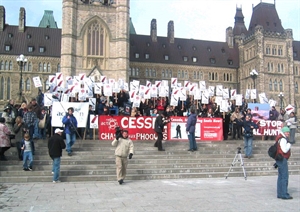World Consumer Rights Day 2025 is on Saturday, March 15, 2025: i am a student of class 10 and i want some information on consumer rights?
Saturday, March 15, 2025 is World Consumer Rights Day 2025.
As an Amazon Associate I earn from qualifying purchases.

Introduction
Consumer rights are now an integral part of our lives like a consumerist way of life. They have been well documented and much talked about. We have all made use of them at some point in our daily lives. Market resources and influences are growing by the day and so is the awareness of one's consumer rights. These rights are well-defined and there are agencies like the government, consumer courts and voluntary organisations that work towards safeguarding them. While we all like to know about our rights and make full use of them, consumer responsibility is an area which is still not demarcated and it is hard to spell out all the responsibilities that a consumer is supposed to shoulder. In this chapter, we will give an overview of the 8 consumer rights, their implications and significance for a developing country like India, and also define the various aspects of consumer responsibility.
II. Consumer Rights
In the 20th century, the presence and influence of the market grew dramatically in consumer life. We began to purchase things from the market for a price. Soon, mass production and industrial production came into being, giving the consumer world an entirely new dimension. Have you ever wondered how much urban consumers depend on the market for fulfilment of even their basic needs. This over-dependence on the market and the inherent profit motive in mass production and sales has given manufacturers, and dealers a good reason to exploit consumers. As a consumer, you would know how market products are constantly under-weight, of inferior quality and do not prescribe to quality standards specified by quality-control agencies. Consumers not only do not get value for their money but also often have to suffer losses and inconvenience due to market manipulations.
III. The 8 Consumer Rights
In order to safeguard consumer interest, 6 consumer rights were initially envisioned by consumer rights activists of the West, namely:
Right to Safety
Right to Information
Right to Choice
Right to be Heard
The Right to Redress
The right to consumer education
These rights were conceptualised in the developed world's consumer context where consumers are wealthy and completely dependent on the market to fulfil their needs. These rights had to be redefined keeping in mind the realities of a developing country like India. Consequently, two very important rights were added viz.:
The Right to Basic Needs and
The right to a healthy and sustained environment.
These two rights are very closely linked with the realities of developing countries where environment plays a very important role as a resource and support-structure for the people. In a country like India, a large section of the population looks for food security, assured safe water supply, shelter, education and health services. Most consumers relate very little to imported goods stacked in supermarkets or for choice among latest models of cars, as is the case in the developed world. For India's 1 billion population, food security and a safe environment are more pressing needs than any other consumer options and rights. The developing country natural resources also serve as a resource base for the developed world's industrial output.
Right to Basic Needs
Access to food, water and shelter are the basis of any consumer's life. Without these fundamental amenities, life cannot exist. In September 2001, India's stock of foodgrains were around 60 million tonnes, yet one third of the Indian population lives below the poverty line and consumers often go hungry or remain severely malnourished, leading to poor health. The recent starvation deaths in Orissa are a case in point. A very crucial objective of the conceptualisation and existence of consumer rights is to ensure that consumers have an assured food supply, safe and permanent dwellings, basic amenities of life like sanitation and potable water, and power supply.
Urbanisation is seen as a mark of development but for rural migrant population, living conditions in cities is very poor. The population of cities is growing rapidly in India and after 1988, the percentage of urban poor has been more than that of the rural poor. Around 20 to 25 per cent of the urban households live in slums, make-shift colonies or refugee settlements due to non-availability of affordable and decent habitat in urban areas. . According to some estimates, in urban areas alone, there is a housing shortage of 17 million units. This has led to a habitat crisis in Indian cities. In rural India, the situation is equally bad, with a large part of the population still living in make-shift dwellings and hutment. With non-permanent housing comes lack of sanitation facilities and other amenities like running water and electricity supply. Due to burgeoning population, most people do not have access to dry toilets in rural and urban areas.

rights of a consumer?
Consumer Rights and Responsibilities.
CONSUMER RIGHTS AND ITS EXPANSION
RIGHTS AND RESPONSIBILITIES
India has been observing 15 March since 1989 as the National Consumers’ Day. This day has a historic importance as it was on this day in 1962, when the Bill for Consumer Rights was moved in the US Congress. During his speech President John F. Kennedy had remarked:
“If a consumer is offered inferior products, if prices are exorbitant, if drugs are unsafe or worthless, if the consumer is unable to choose on an informed basis, then his dollar is wasted, his health and safety may be threatened, and national interest suffers.”
John F. Kennedy had equated the rights of the ordinary American consumer with national interest. He gave the American consumer four basic rights:
The Right to Safety - to be protected against the marketing of goods which are hazardous to health or life.
The Right to Choose - to be assured, wherever possible, access to a variety of products and services at competitive prices: and in those industries where competition is not workable and Government regulation is substituted, an assurance of satisfactory quality and service at fair prices.
The Right to Information - to be protected against fraudulent, deceitful or grossly misleading information, advertising, labeling, or other practices, and to be given the facts s/he needs to make an informed choice.
The Right to be Heard - to be assured that consumer interests will receive full and sympathetic consideration in the formulation of Government policy, and fair and expeditious treatment in its administrative tribunals.
Kennedy recognised that consumers are the largest economic group in the country’s economy, affecting and affected by almost every public and private economic decision. But they were also the only important group who were not effectively organised, whose views were not heard.
Therefore, the Federal Government, by nature the highest spokesman for all people, had a special obligation to the consumer’s needs. Thirteen years later President Gerald Ford felt that the four rights constituted in Kennedy’s Bill of Rights were inadequate for a situation where most consumers are not educated enough to make the right choices. So he added the Right to Consumer Education, as an informed consumer cannot be exploited easily.
While these rights served the interest of the American consumer well enough, they did not cover the whole gamut, because a global consumer did need, apart from them, other well-defined rights like basic needs, a healthy environment and redress.
The Consumers International (CI), former International Organisation of Consumer Unions (IOCU), the umbrella body, for 240 organisations in over 100 countries, expanded the charter of consumers rights contained in the US Bill to eight, which in a logical order reads:
1. Basic Needs
2. Safety
3. Information
4. Choice
5. Representation
6. Redress
7. Consumer Education and
8. Healthy Environment.
This charter had a universal significance as they symbolised the aspirations of the poor and disadvantaged. On this basis, the United Nations, in April 1985, adopted its Guidelines for Consumer Protection.
BIRTH OF CONSUMERS’ DAY
Considering the importance of Kennedy’s speech to the US Congress on this day, and the resultant law, the CI took a decision in 1982 to observe 15 March as the World Consumer Rights Day from 1983. Peculiar though it may sound, 15 March is not observed as a special day in the world’s largest and most pulsating consumer society - the US. But at home in India the Government, adopted 15 March as the National Consumer’s Day.
India is a country, which never fell behind in introducing progressive legislation - we were among the first in the world to introduce universal adult franchise for women.
Gandhi had rightly said:
“A customer is the most important visitor on our premises. He is not dependent on us. We are dependent on him. He is not an interruption in our work - he is the purpose of it. We are not doing him a favour by serving him. He is doing us a favour by giving us the opportunity to serve him.”
BIRTH OF ‘COPRA’
The right to redress lead to the passing of the Consumer Protection Act (COPRA) in 1986 in India which has been defined as the Magna Carta of consumers but, it recognises only six of these eight rights:
1. Safety;
2. Information;
3. Choice;
4. Representation;
5. Redress and
6. Consumer Education.
Besides this statutory recognition, COPRA has succeeded in bringing about revolutionary judicial reforms by providing juristic quasi-judicial courts solely for redressal of consumer grievances (where a price has been paid), for adjudication within a limited time frame of 90 to 150 days.
The rights of basic needs and healthy environment could not be provided in COPRA as these symbolised the aspiration of the poor and the disadvantaged, and were not the subject matter of priced commodities and services available in the market place. However, these are the backbone of peoples’ movements in both the developing and the developed worlds.
Yet, inspite of pulsating movements, the rights of consumers could and were trampled on and often. There existed a vacuum in the definition of rights. It was often seen that boycotts would be spontaneous or organised in an adversarial situation, examples of, which are numerous. On an occasion in Calcutta a boycott of fish was successfully organised and the marketing cartel had to bow down, by cutting the inflated prices, rather than store rotting fish.
RIGHT TO BOYCOTT
Taking a leaf out of India’s freedom movement, when Mahatma Gandhi had successfully organised various boycotts of foreign cloth, salt etc. we at CUTS, declared and adopted the 9th Consumer Right on India’s Independence Day - 15 August 1990: “The right to resist and boycott any person, goods or services in the event of conflict with consumer’s interest”.
This right was the ultimate one, to be used when all methods fail. And many a times they do: the seller does not heed, the administration does not listen, and the judiciary fails. This right inherently signifies consumer unity as an individual consumer can be helpless or even apathetic, and it is a collective action that succeeds.
While the right to boycott epitomises the enability of consumer rights, the right to basic needs remained abstract. It only defined a consumer’s necessities required to survive and live a dignified life but it did not demand the means to obtain them - the right to work.
However, the right to work is also vague, as this colloquially meant easy jobs, and did not feature in the existing charter of Consumer’s Rights. In the interlude, a new Union Government in India raised a debate to recognise the right to work, as a fundamental right on the one hand, and advocating self employment schemes for everyone, including the poor, on the other.
Observing the societal disarray created by government job and dole schemes, whether permanent or temporary, and how they maim the spirit of enterprise which prevails in the mass humanity of India, ‘CUTS’ was inspired to declare and adopt the 10th (enabling) Consumer Right on 26 January 1991: “The right to opportunities to acquire basic needs which will enable one to work and to earn a living, without exploitation.”
This inherently demands execution of the state’s singular responsibility to provide productive infrastructure, work ethos, job opportunities, social justice and economic equity. Both these rights were adopted at the Third National Convention of Consumer Activists at Calcutta during 1-3 November 1991, calling and urging the now (CI) IOCU to recognise and take suitable steps in expansion of the Consumer Rights internationally.
INDIA’S GLOBAL REPUTATION
Laws, rules, regulations and orders (for which India has unparalleled distinction in the Guinness book of records) alone do not protect consumers, but it is the rights’ movement of people which produce results in a democracy.
One of the greatest achievements of the Indian consumer movement is the enactment of the dynamic consumer law: COPRA. Coming 39 years after Independence, it has acknowledged the rampant consumer abuses, including those of the government owned public utilities like telephones, transport, power etc. These utilities, in the first place, were created as state monopolies ostensibly to protect consumers!
Critics of COPRA rightly conclude that it can’t do anything about rising prices, but it has succeeded in bringing about fairplay in the supply of goods and services available in the market place, giving substance to the adage: Customer is King. Also, COPRA has encouraged active consumer bodies to demand, and perhaps see in the near future, independent Public Utility Regulatory Commissions to debate costing, pricing and promote competition.
This confidence emanates from the empowerment of voluntary organisations in COPRA and other consumer laws. While right to information is enshrined in COPRA, addition of the enlarged Right to Know in the fundamental rights chapter of the Indian Constitution would only result in meaningful empowerment - no more tight rope walking, but total glasnost.
In fact the Central Consumer Protection Council has recommended to the Government to enact a Freedom of Information Act on the pattern of a similar law in the US. Another major achievement of the Indian consumer movement in the context of the world scenario, was to get the government in 1989, to adopt 15 March, the World Consumer Rights Day, as the National Consumers’ Day. Unlike the Labour Day on 1 May, which has roots in the US, the Consumer Rights Day, which also has roots in the US, is not even observed there.
Today India is the only country in the world, which has exclusive courts for consumer redressal. At the IOCU’s 13th World Congress held in Hong Kong during 7-13 July 1991 it came in for praise and developed countries were called upon to emulate. In the same year, these developments inspired Jim Sugarman, a noted US consumer activist and a close associate of Ralph Nader, to candidly observe: “India is getting a global reputation for the rapid development of its consumer movement.”
BUREAUCRAT’S REVENGE
COPRA, which was amended by an ordinance in June 1993, is a mixture of sad and happy tidings. And tragic because of one surprise which our bureaucrats sprung onto the bill, a matter which was not even discussed in the high power working group of the Central Consumer Protection Council.
The law then proposed a limitation of one year to file complaints, where none existed. An utter nonsense, which goes beyond the principles of our well established Limitations Act of 1963, wherein courts cannot be approached after the expiry of three years of the last cause of action.
Since there was no limitation period prescribed under COPRA, in one matter, the apex consumer court, the National Commission had pronounced that the principles of the Limitations Act do not apply but can be relied upon, though not religiously.
This proposal would not only have put consumers at a terrible disadvantage but also annoy them badly. Most warranties and guarantees on goods expire in one year, and manufacturers often drag on many consumers during this period by attending to complaints, instead of setting it right or replacing or refunding the price of the defective goods. They will thus be deprived of the easy redressal avenue by this one-year ‘deadline’.
Consumers will be angry because the rule on the time limit of 90/150 days provided in COPRA for disposal of cases are practiced more in the breach, and cases drag on for years. Under this situation, expecting consumers to meet a deadline will be very irritating. Granted that delayed complaints can be entertained, but that would mean a set of lengthy arguments on just the admissibility of the case.
Fourthly, the law also enables consumers to file class action complaints, which incidentally always existed, but there can be no basis to determine the deadline in such matters. For instance, if the Motor Vehicles Act, 1988 provides for certain mandatory safety features which have been ignored by manufacturers; after research, we decide to file a complaint what would be the limitation period?
Due to these arguments and lobbing the time limit was revised to two years, when the ordinance was put on the table of the parliament.
BELYING EXPECTATIONS
The law belied the consumer affairs Minister, A K Antony’s note in the statement of objects and reasons, wherein he says the working of the redressal agencies has helped to arouse the expectations of the people on several other grounds as well.
Housing by way of plots or flats or houses has been covered under the definition of ‘services’ under COPRA. Rather than adopt the words: ‘real estate’, as defined under the MRTP Act, 1969 from which the whole definition clause of services was borrowed in the first instance, a new jargon: ‘housing construction’ is added. This would mean that the consumer courts will only entertain complaints relating to: flats, land, houses purchased or to be purchased.
In a beacon case involving a plot: Garima Shukla vs. UP Avas evam Vikas Nigam, the National Commission had held that the dispute is covered as a deficiency in the service of housing. The Supreme Court upheld the orders of the National Commission.
Among several other recommendations of the Central Council, another major one has also been diluted. In view of several protests by consumers, the council had agreed to recommend incorporation of an open, democratic and a transparent process of selection of the non-official members of consumer courts.
The recommendation was that a selection committee headed by the minister and consisting of the secretary in charge of the department, a nominee of the chief justice of the state high court and two consumer activists (one a woman) would be the right form. The bill now proposes a committee headed by the President of the state commission and the consumer affairs secretary and the state law secretary.
It is thus heavily loaded against transparency. I have seen many a president of the State Commission sitting in the chamber of the secretary, especially when s/he is a retired high court judge. By and large the secretary has to follow the minister’s orders, therefore the transparency sought in the selection process will be doubtful. Presence of two activists would have perhaps changed the odds.
However the president of the State Commission can only be appointed after consultation with the Chief Justice of the concerned high court, but those who know, consultation does not mean consent or concurrence. On several occasions, in spite of opposition, people have been appointed, after the so-called consultation.
THE BROOM STICK
The Council had made several other vital recommendations after long deliberations and critical debates, but they have been given the broomstick. These were:
Consumer rights were to be put in a separate chapter so that violations of the same could be an additional ground, if not the basis of a complaint. These will now continue as decorations in COPRA, for the central council to ‘talk, about - only once in a year, as against twice as recommended’.
Services rendered by public health care system and civic bodies were to be covered, as they are not charities but are run from the taxpayer money. So that consumer could get value for money and these white elephants are brought to heel. The union health ministry prevailed.
Lawyers were to be debarred except when the complainant had engaged one, or with his consent or if the consumer court directed the parties to engage lawyers, when questions of law were involved. This was recommended because lawyers often delay the settlement of cases by court craft etc. Apparently the belligerent lawyers lobby proved stronger.
Writ jurisdiction of high courts has to be excluded by bringing COPRA under Article 323B of the constitution as their interference, particularly the Calcutta High Court, delays the proceedings especially when an hierarchy of appeals is provided under COPRA where the Supreme Court is the ultimate arbiter.
Empowering Consumer Courts by giving them the authority to order cease and desist, or interim injunction or take suo motu action (of its own accord and on its own information) like the MRTP Commission, so as to meet the ends of justice have not been incorporated. For, bureaucrats felt that it would give unbridled power to over 450 district fora and 30 state commissions and that would have created havoc.
Some readers might remember the case of ITC LTD’s Wills brand being injuncted by a Gangtok district judge, which cost ITC a large sum of money to get it vacated from the Supreme Court under its extraordinary jurisdiction. This type of case is a freak but without such power our consumer courts will be hamstrung in protecting the consumers interest, as it were.
Section 1(4) of COPRA says this Act will apply to all goods and services, therefore under the definition of services, where illustrations are given, it was understood that it was an all inclusive definition and exclusions had to be specified.
To correct the anomaly, especially in view of the hectic lobbying by the medical fraternity and other professional groups, it was proposed to put a semi-colon, and add, “not limited to” before the illustrations. But this has also not been inserted in the amendment bill.
RECALLING UNSAFE GOODS
So much so for the bureaucratic revenge and/or sabotage. However there are many welcome steps, though confused as well, which will take the consumer movement considerably forward. These are:
Enhancement in the scope of relief under COPRA to stop the sale of and/or order withdrawing the marketing of hazardous goods. This will entitle consumers and consumer groups to challenge harmful goods, provided a law says so, like the BVO case when this toxic chemical was banned but continued to be used in soft drinks like Limca, Gold Spot etc.
But the clause does not empower consumers to challenge hazards in services. For instance the Electricity Act provides for certain safety measures to be adopted by the suppliers, but consumers may not be able to challenge it.
This is more so surprising when in all the consumer rights in COPRA ‘services’ have been added along with ‘goods’, and under the relief section power has also been given to consumer courts to remove defects and deficiencies in services.
A major beneficial change has been added to cover agreements for purchase, as against the earlier provision for only goods or services actually purchased. This would cover disputes relating to booking of flats, cars, scooters and similar contracts, where delivery has not been made.
Restrictive trade practices have been added, also enabling the courts to stop these, as well as unfair trade practices. This means that there would be a mini-MRTP Commission in every district.
Monetary jurisdiction of a district forum has been raised to Rs 5 lakh, while that of a state commission to Rs 20 lakh. Beyond this, the National Commission. Age limit of the members of the state commissions has been fixed at 67, while that of the national commission at 70. No mention of the age limits of members of the district forums.
Complaints against goods purchased for commercial purpose will ordinarily not be adjudicable under COPRA save and except where such goods in dispute have been purchased by a self-employed businessperson like a taxi owner-driver.
Costs would be awardable to consumers or their organisations that win cases. Simultaneously consumers who file frivolous or vexatious complaints could be penalised with a fine of upto Rs 10,000. And if they don’t pay up, they could face a worse fate of paying a further fine of upto Rs 10,000 and/or undergo imprisonment of upto three years like other offenders.
Following the Supreme Court order, in the Common Cause Vs Union of India case, administrative control of district fora will now be under the state commissions, who will in turn report to the National Commission. A proper reporting system and procedures will also be incorporated.
Lastly, a quiet change has been incorporated to redefine the department of civil supplies as consumer affairs, which is what we in the consumer movement have been shouting for a long time.
======================
Rights and responsibilities

consumer awareness?
1. BELLARY, MARCH 17. The former District Judge and president of District Consumer Forum, R. Ganesh Rao, has called upon consumers to take advantage of the provisions of the Consumer Protection Act and fight against injustice.
He was speaking after inaugurating a function to observe World Consumer's Day and the 20th anniversary of the Bellary Nagarika Vedike at the Rock Garden Auditorium here on Tuesday.
Mr. Rao said that every day, consumers are being cheated by being supplied spurious seeds and medicines, pollution, supply of contaminated drinking water, use of improper weights and measures. Despite the existence of the Consumer Protection Act, there is very little help for those affected by these illegal practices. He was of the view that consumers should make use of the provisions of the Act and seek the help of the Consumer's Forum and the Citizens' Forum to get their problems solved.
Cases won
The President of the Bellary District Consumer's Forum, A.A. Hulgeri, was the chief guest of the function. He pointed out that those who have approached the forum have succeeded in winning several cases and urged other consumers to file cases against those who have cheated them.
M.S.R. Rao, a senior consumer activist and secretary of the Citizens' Forum, explained that cases have been filed against various offices and companies, on behalf of consumers, and the forum has succeeded in getting justice for them. He was felicitated on the occasion in recognition of his service to consumers.
2.Farmers' win in court boosts morale
Two farmers from Chamarajanagar, Karnataka, took the state government to court for not giving them water for the past three-four years. The twist is that they approached a district consumer court, and won the case in less than a year.
29 May 2006 - In a landmark judgement in 1997, the Supreme Court ruled that water is a 'public trust' maintained and regulated by the state. Public trust implies that it will be regulated and supplied to meet everybody's needs in a fair and balanced way. In reality, however, while the government has rights to the water, it has been far from meeting its obligations on fair delivery. And on the other hand, farmers and users have not demanded their entitlements from the state very forcefully.
In 2005, farmers Prabhu and Murthy found that newly irrigated areas were receiving water whereas their old gardens and lands were being dried out.
Also, the dam had received enough water to supply them and yet, water was not being released.
• Selling piped water or dreams?
• Confusing water rights with quotas
On 19 January this year, in a significant ruling, a different kind of court -- the District Consumers' Disputes Redressal Forum at Chamarajanagar, Karnataka -- said that farmers who pay 'water rate' fees are consumers and government dam authorities are service providers. As such, if dam authorities fail to release water, they may be held up for deficiency of service.
This ruling comes from the efforts of two farmers in a small village – Alur – in Chamarajanagar district of Karnataka, who dared to take the state machinery to task for not releasing water to their coconut and arecanut gardens. Mahesh Prabhu and Mamatha Murthy, filed cases on 8 April 2005 and 21 September 2005 respectively against the Executive Engineer M C Chandrashekhar and Assistant Executive Engineer Satyananda of the Kabini Nala sub-division, Cauvery Neeravari Nigama, for deficiency of service in releasing the water from the Suvarnavati Dam. The then Chief Secretary of the Government of Karnataka, was also charged ex-parte in the case.
The story began in 1966 when the government decided to dam the Suvarnavati river to irrigate an additional 7,000 acres of land. The river flows near Alur village and provided water to 9,694 acres of farms and gardens. The farmers of Alur and other villages downstream protested against the damming of the river and were assured of regular water supply by the dam authorities. They agreed, the dam was built and life went on with the farmers paying the taxes, fees and rates as demanded by the authorities.
The areca, coconut and other trees in the orchard of Mamatha Murthy. Pic credit: Jayant Rao.
In the year 2002, a drought was declared in Chamarajanagar and water was not released. The water rate payment was also suspended. The same story was repeated for the next two years as well. In 2005, Prabhu and Murthy found that newly irrigated areas were receiving water whereas their old gardens and lands were being dried out. Also, the dam had received enough water to supply them and yet, water was not being released. When personal appeals, official requests and repeated pleas did not yield any result, Prabhu filed a case in April 2005 demanding that the government respect his entitlement to water. In September, Murthy, the guardian of her minor daughter's lands, did the same. Both the cases were clubbed and consolidated by the consumer forum for consideration.
The three major problems before the court were: (1) Are the two farmers consumers within the meaning of the Consumer Protection Act? (2) If so, have the government officials caused a deficiency of service as alleged? (3) Finally, to what relief are the two farmers entitled?
The court found that three kinds of charges were being collected from the farmers – betterment charges at Rs 500 per acre, maintenance cess at Rs 4 per acre, and water charges at variable rates ranging from Rs 9 to Rs 200 depending on the crop. The court noted that as per Section 44 of Karnataka Irrigation Act and Sections 3, 10 and 28 of The Karnataka Irrigation Act, 1957, betterment charges and maintenance cess were compulsory taxes collected by the government for the provision of water.
Systematic maintenance of the canal system is very important to ensure regular flow of water to the orchards. Pic credit: Jayant Rao.
However, rule 4 of the Karnataka Irrigation (Levy of Water Rate) Rules 1965, clearly stated that water rate was collected "from persons who have taken permission to use water". As such, it is not a tax, but a payment for services rendered. The service being the supply of water for irrigation. Just because the state government has declared Chamarajanagar district drought hit, and suspended collection of water rate, "it cannot be said that these complainants are not consumers," the court ruled in its judgment. Hence, the court declared the two farmers were consumers and the government was the service provider.
It was then time to open the Suvarnavati dam project documents to recall the commitments made to the people in the 1960s. It was envisaged that 1.10 TMC of water would be stored to irrigate 7,000 acres of fresh atchkat (irrigated farm land) and 9,694 acres of existing atchkat. In 2004, 1.20 TMC of water was stored in the reservoir, but water was released only to the new atchkat areas and not to the old. The engineers contended that water had not reached the petitioners as their lands were at the tailend of the canal and there was considerable sand quarrying in the river bed during the preceeding two years of drought.
However, Prabhu and Murthy produced maps to prove that they were only 25 km from the dam and not at the tailend. Farmers higher up the canal were drawing excess water, they alleged. Additionally, they also showed that the executive engineer had himself attempted to help his contractor quarry sand from the river bed. The court ruled that the engineer had failed in his duty to protect the interests of the farmers. Since Prabhu and Murthy asked for water only once or twice a month for their gardens, the court found that the state had caused deficiency in service to them.
Finally, the court came to the controversial issue of loss and compensation. Prabhu and Murthy contended that their gardens had perennial crops like coconut and arecanut in addition to annual crops like banana and sugarcane. In the case of annual crops, the loss of crop was only for a year. In the case of perennial crops like coconut and arecanut, the loss would continue for several years. Prabhu estimated his loss at Rs 4,90,000, while Murthy estimated hers at Rs 2,91,000. However, the court ruled that their loss had to be estimated by an expert or an approved valuer, and not by themselves. The AE and the EE were directed to jointly pay the two farmers a nominal amount of Rs 5,000 each for deficiency of service, Rs 1,000 each for mental torture and agony and Rs 500 each for court charges.
Murthy and Prabhu see this for what it is: victory of a principle. They have also since started getting water. The most significant thing that has happened in the months since the January 2006 ruling is that the morale of farmers in Alur itself has been boosted. Many of them are now contemplating going to court. A few have started with their paperwork. Several farmers are likely to demand their water entitlement from the government. The officials in the meantime have appealed the entire decision. But the farmers are undaunted and are preparing for the next round of battle.
"Practical problems of water flow may be solved relatively easily," Mahesh Prabhu notes. The engineer only has to maintain the canals and ensure that sand quarrying does not take place. "Water in the canal could be regulated and measured in more efficient ways to ensure that each farmer gets as much as she or he pays for and no more," says Murthy. ⊕

















